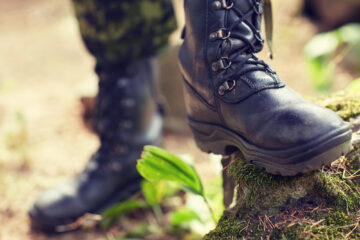Wildfires are an ever-looming threat, especially in densely populated areas where the risk of catastrophic loss of life and property is significantly heightened. In such environments, firefighters face unique challenges that demand strategic planning, swift action, and unparalleled coordination.
According to Statista, in 2022, the US had to deal with almost 70,000 wildfires. This was an increase in the number of wildfires in the country from 2021, which saw around 58,985 wildfire incidents.
The National Centers for Environmental Information reports that in the first two months of this year, the US has already seen 4,803 wildfires. As the number of wildfires increases, the complexity of battling them amidst urban sprawl necessitates specialized techniques and approaches.
Here are a few crucial strategies for firefighters when confronting wildfires in densely populated areas.
Preparation
Preparation is the cornerstone of effective wildfire management. Before the wildfire season begins, firefighters must conduct comprehensive risk assessments to identify vulnerable areas within densely populated regions.
By mapping out potential ignition sources, fuel loads, and evacuation routes, fire departments can anticipate challenges and develop tailored response plans.
Firefighters must also protect themselves by stocking up on necessary safety equipment. They must also use safe firefighting foam that’s free from harmful chemicals. Using toxic firefighting foam can lead to them developing cancer, something that was brought to public attention through the AFFF foam lawsuit.
According to TorHoerman Law, the AFFF firefighting foam contains harmful ingredients like PFAS chemicals. These chemicals can cause cancer and other adverse health effects in those who use them. When this was revealed, the AFFF firefighting foam lawsuits were filed to seek compensation for the AFFF victims.
Hence, firefighters must be aware of the foam they are using and avoid the toxic ones at all costs.
Early Detection and Rapid Response
Early detection is critical for containing wildfires before they spiral out of control. Firefighters must leverage advanced technology, such as satellite imagery, drones, and thermal cameras, to detect ignition points swiftly. Additionally, investing in a network of strategically positioned lookout towers and surveillance systems enhances early warning capabilities.
Once a wildfire is detected, rapid response is imperative to prevent its spread into densely populated areas. Fire crews equipped with specialized firefighting equipment and aerial resources should be mobilized immediately to initiate suppression efforts and establish fire lines.
Intelligent Urban Planning and Infrastructure Design
Urban planning and infrastructure design play a pivotal role in wildfire resilience. Firefighters must collaborate with urban planners, architects, and engineers to incorporate fire-resistant materials and building codes that mitigate the risk of wildfire damage.
Implementing defensible space around homes creates a buffer zone that slows the advance of wildfires and provides firefighters a tactical advantage during suppression operations. Moreover, integrating firebreaks, green spaces, and access roads into urban landscapes enhances evacuation routes and facilitates firefighting efforts.
As per the US Census, Columbia, New Jersey, and Rhode Island are some of the most densely populated places in the country. Therefore, these areas require immediate attention to ensure better urban planning for combating wildfires.
Community Engagement and Education
Engaging the community is essential for fostering a culture of wildfire preparedness and resilience. Firefighters should conduct outreach programs, workshops, and drills to educate residents about wildfire risks, evacuation procedures, and defensible space practices.
Empowering homeowners to take proactive measures, such as installing ember-resistant vents and maintaining fire-resistant landscaping, strengthens the community’s collective ability to withstand wildfires. Also, establishing neighborhood watch programs and communication networks enables residents to report suspicious activities and coordinate evacuation efforts effectively.
By forging strong partnerships with local stakeholders, firefighters can mobilize a united front against the threat of wildfires in densely populated areas.
Frequently Asked Questions (FAQs)
How do wildfires start?
Lightning strikes, volcanic eruptions, and severe weather phenomena represent formidable forces capable of igniting catastrophic wildfires in mere moments. Human actions, like leaving unattended campfires, careless disposal of lit cigarettes, burning debris, and deliberate acts of arson can also cause wildfires.
Which parts of the US are more prone to wildfires?
Regions of the western United States, particularly areas characterized by dry climates and dense vegetation, are more prone to wildfires. States like California, Oregon, and Arizona often experience heightened wildfire activity due to these conditions.
Why are wildfires so common in the US?
Over the last two decades, climate change has significantly heightened the risk and magnitude of wildfires in the US. Environmental changes, marked by increased heat and a thirstier atmosphere, have played a pivotal role in worsening the frequency and severity of wildfires.
Conclusion
Battling wildfires in densely populated areas presents a formidable challenge that demands a multidimensional approach. By implementing the strategies outlined above, firefighters can enhance their capacity to protect lives, property, and critical infrastructure in the face of wildfire threats.
As climate change exacerbates the frequency of wildfires, proactive measures and collective action are more crucial than ever in safeguarding our communities from wildfires.



